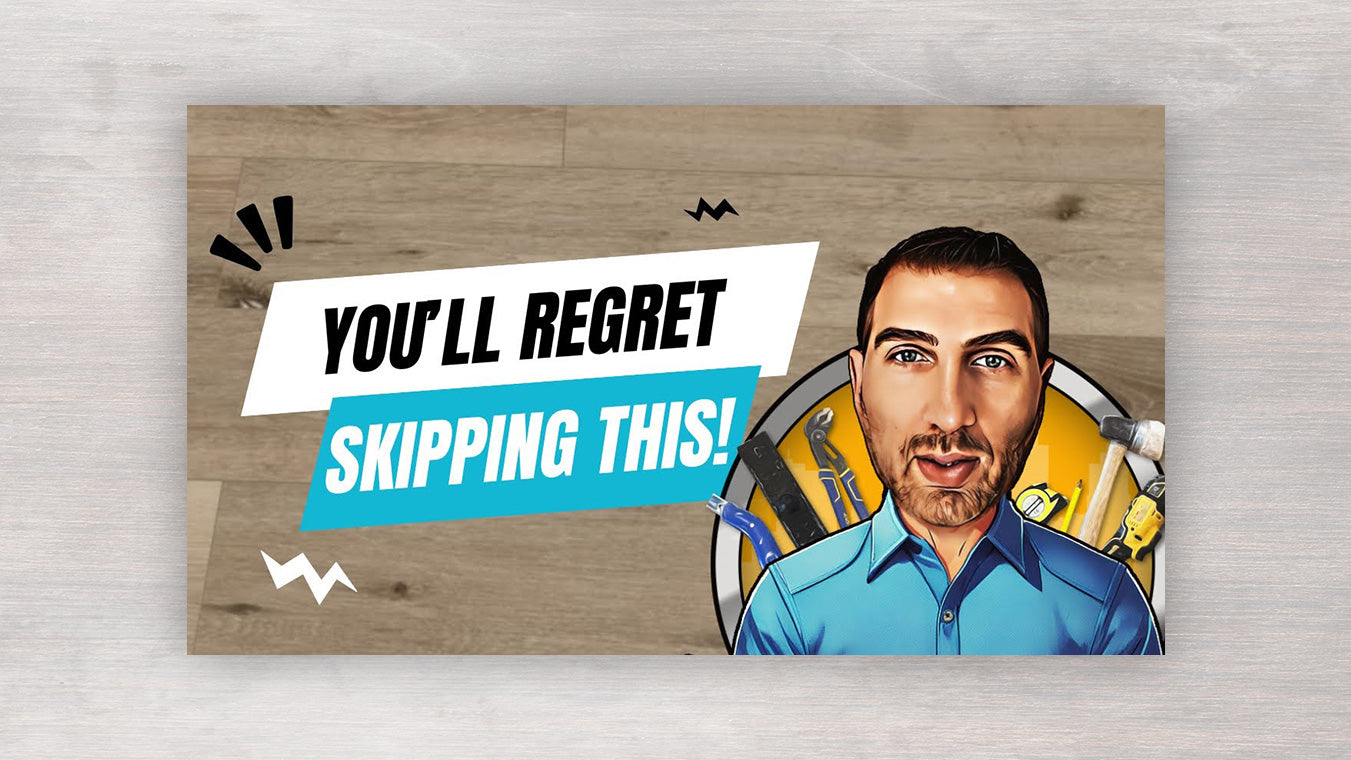
What to Do When Quarter Round Doesn't Cover the Gap: A Pro Installer's Fix
•Posted on May 20 2025
Even the most seasoned flooring installers run into surprises—like discovering that your quarter round trim doesn't quite cover the edge of the vinyl plank. Whether you're a DIY homeowner or a full-time flooring contractor, this is a frustrating but fixable issue—and I'm here to walk you through how I solve it on real job sites.
At Ultimate Flooring Guy, I believe in sharing honest, practical tips from the trenches. This post is based on an actual installation where I had to get creative with how I nailed the quarter round—and use a few pro tricks to make it look perfect.
The Problem: Gaps the Quarter Round Can't Cover
You're installing LVP (luxury vinyl plank) and finishing off the edges with quarter round. But then you notice a common problem: a gap that's too wide for the quarter round to fully conceal.
This can happen for a number of reasons:
-
The flooring wasn't cut close enough to the wall
-
The wall is bowed or uneven
-
The baseboard height leaves too much exposed subfloor
-
Or the client bought thinner quarter round without consulting you
Whatever the cause, you don't want to leave a visible gap—and you definitely don't want to jam in a sliver of LVP just to cover it. Those small pieces rarely lock in well and often come loose over time.
The Fix: Nail Vertically and Shim if Needed
Instead of nailing quarter round horizontally (which would just push it backward and reveal the gap), I nail it at a steep vertical angle—straight down into the subfloor. This holds it tight to the edge and helps it stay forward, right where it needs to be to hide the imperfection.
Sometimes, I even slide a small shim or bit of scrap material behind the trim to push it forward just enough. If there's leftover caulking from a previous install that's doing the same job? I leave it and caulk over it. No shame in a smart shortcut.
Don't Forget the Caulk – It's a Game Changer
Let me tell you: caulking is one of the most powerful tools in a pro flooring installer's kit. After 20+ years in this business, I've come to rely on caulk not just for sealing but for blending and hiding minor imperfections—especially when working with tricky corners or uneven baseboards.
Once your quarter round is nailed vertically and seated properly, go back and apply a clean bead of caulk along the top and any joints. It'll make even the most questionable edges look tight and professional.
LVP Tip: Don't Use Tiny Fill-In Pieces
In this job, the homeowner had a small section of floor near the wall where a tiny LVP piece could have gone. But trust me—those small pieces just don't hold. Without enough width to lock properly into the adjoining planks, they tend to lift or shift over time.
Instead, I recommend skipping the filler and solving the issue on the quarter round side using proper nailing technique, shimming, and caulk. It looks better, lasts longer, and saves time on future repairs.
My Go-To Product: Cali Vinyl LVP
While I didn't supply the flooring for this particular job, I always make it a point to recommend Cali Vinyl for future installs. Why?
 20 mil commercial-grade wear layer
20 mil commercial-grade wear layer Long-lasting durability—great for high-traffic areas
Long-lasting durability—great for high-traffic areas Affordable pricing through my site
Affordable pricing through my site No callbacks in years of installs
No callbacks in years of installs
It's the only LVP I regularly use now unless the customer brings their own product. And yes—you'll often find better pricing through UltimateFlooringGuy.com than big box retailers like Lowe's or Home Depot.
Final Thoughts: Flooring Done Right Means Thinking on Your Feet
This job was another reminder that real-world installations don't always go by the book. That's why you need practical, field-tested solutions for when things don't line up perfectly—and that's what I bring you through every tutorial and blog post.
If you want more pro tips, better pricing on premium LVP, or you're a contractor looking to build a relationship for bulk orders—reach out at UltimateFlooringGuy.com.
God bless and keep doing good work out there.